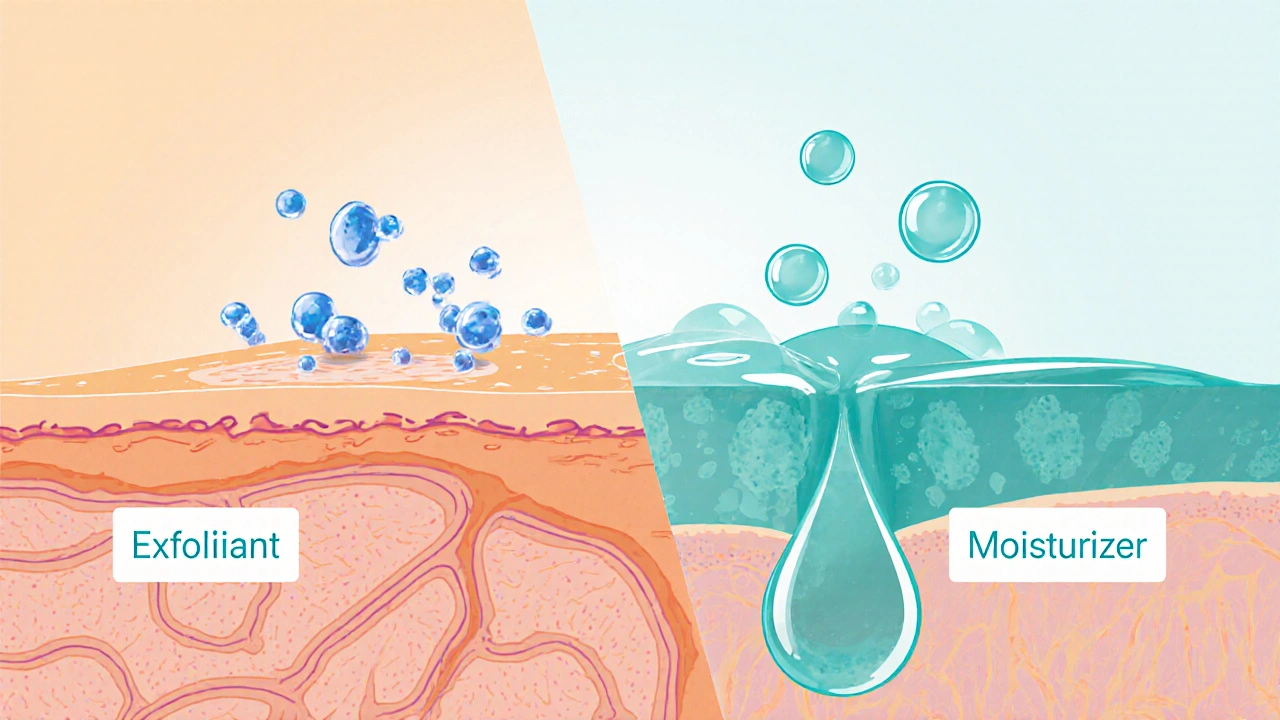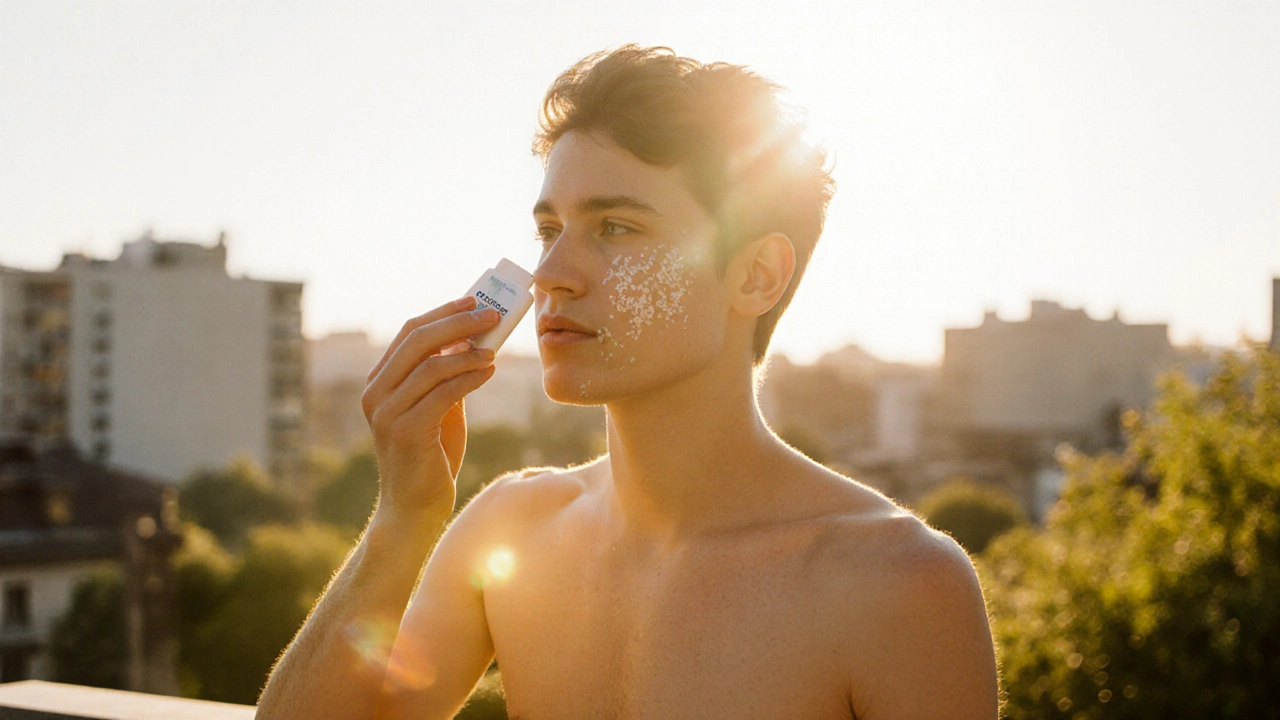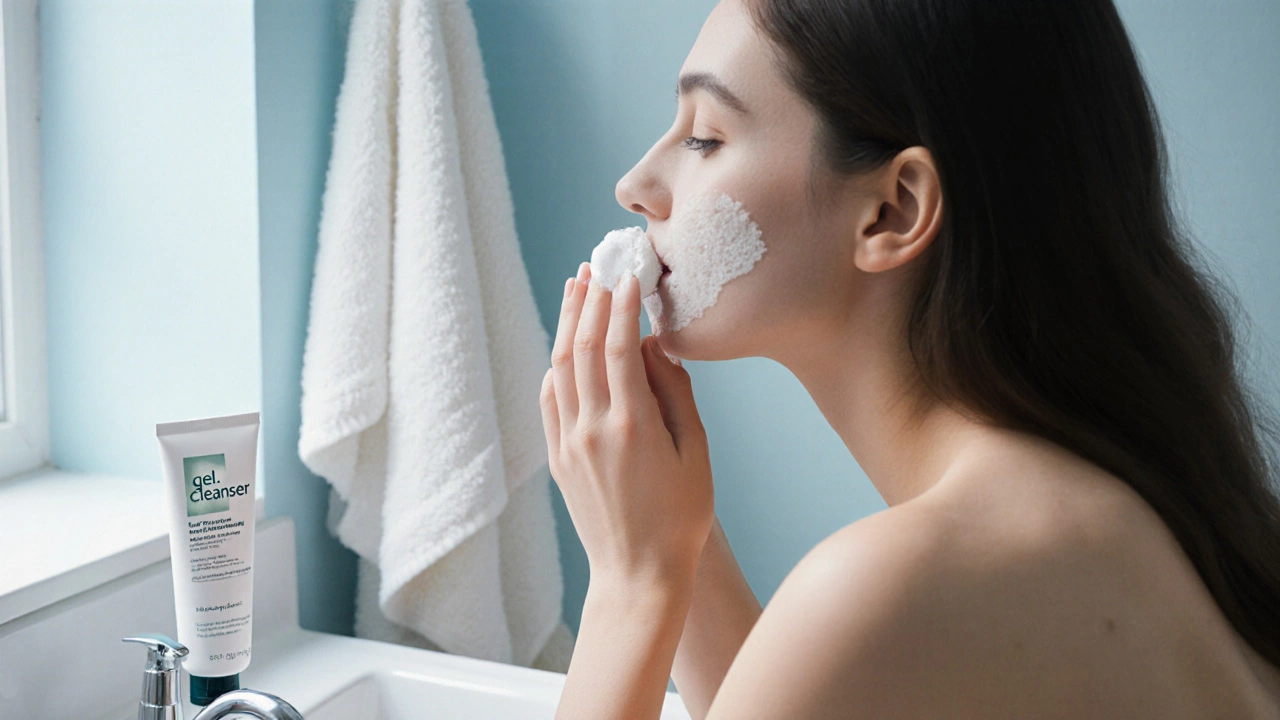Skin Type & Routine Recommender
Your Custom Skincare Plan
Step 1: Identify Your Skin Type
Select the option that best describes your skin
Step 2: Your Primary Concern
Select your main skincare goal
Step 3: Exfoliation Frequency
How often do you exfoliate?
Your Recommended Routine
Based on your selections
When you hear the phrase skincare treatments are the everyday steps and products that keep your skin clean, hydrated, and protected, you might picture expensive creams or endless routines. In reality, the basics are straightforward and work for anyone - from teenagers battling breakouts to adults wanting a fresh glow.
Why a Simple Routine Beats Complex Regimens
Most people think more products mean better results, but layering without purpose can irritate, clog pores, and waste money. A core set of treatments addresses the three biggest skin concerns: dirt and oil buildup, dead skin cells, and moisture loss. By mastering these, you build a solid foundation for any additional steps like specialty serums or treatments.
1. Cleansing - The First Line of Defense
Cleansing removes sweat, pollutants, makeup, and excess sebum that accumulate throughout the day. Think of it as washing the canvas before you paint. The key is to choose a cleanser that matches your skin type - gel for oily skin, cream for dry, and a gentle foaming formula for combination.
- When to use: Morning and night.
- How long: 30-60 seconds of gentle massage.
- Tip: Use lukewarm water; hot water strips natural oils, while cold water doesn’t rinse well.
For extra assurance, here’s a quick checklist to pick the right cleanser:
- Identify your skin type.
- Look for ingredients: salicylic acid for oily, hyaluronic acid for dry.
- Avoid sulfates and harsh fragrances.
2. Exfoliation - Removing Dead Cells
Exfoliation smooths the skin’s surface, allowing moisturizers to penetrate better and preventing clogged pores. There are two main types: physical (scrubs) and chemical (AHA/BHA acids). Chemical exfoliants are often favored because they’re less abrasive.
- Frequency: 1-3 times per week, depending on tolerance.
- Best for oily/combination: 2% salicylic acid (BHA) - clears inside the pore.
- Best for dry/sensitive: 5% glycolic acid (AHA) - dissolves surface cells.
Never over‑exfoliate. Redness, flaking, or a burning sensation means you’ve gone too far.
3. Moisturizing - Locking in Hydration
Moisturizers seal the skin barrier and supply water‑binding ingredients like glycerin, ceramides, and hyaluronic acid. Even oily skin needs hydration; skipping this step can trigger more oil production.
- Daytime moisturizer: Light lotion with SPF (if you don’t have a separate sunscreen).
- Nighttime moisturizer: Rich cream with ceramides or a sleeping mask.
- Application tip: Apply to slightly damp skin to trap water.

4. Sun Protection - The Non‑Negotiable Step
UV rays cause premature aging, dark spots, and skin cancer. A broad‑spectrum sunscreen with SPF 30 or higher should be the final step of every morning routine, regardless of weather.
- How much: About a pea‑size amount for the face; two fingers‑length for the neck.
- Reapply: Every two hours outdoors, or immediately after swimming/sweating.
- Ingredient guide: Zinc oxide or titanium dioxide for mineral sunscreens; avobenzone for chemical formulas.
5. Optional Boosters - Tailoring to Your Needs
Once the basics are nailed, you can add targeted treatments like serums, toners, or masks. These aren’t mandatory for healthy skin, but they can address specific issues such as hyperpigmentation, fine lines, or acne.
- Serums: Concentrated formulas (e.g., vitamin C for brightening, niacinamide for redness).
- Toners: Balance pH and prep skin for serums; avoid alcohol‑heavy ones that dry out.
- Facial masks: Clay masks for oil control, sheet masks for quick hydration.
Introduce one booster at a time and monitor how your skin reacts.
Putting It All Together - A Sample Daily Routine
| Step | Product Type | Example | When |
|---|---|---|---|
| Cleansing | Gentle gel cleanser | CeraVe Foaming Cleanser | Morning & night |
| Exfoliation | 2% Salicylic Acid Liquid | The Ordinary Salicylic Acid 2% | Evening, 2‑3×/week |
| Moisturizing | Light lotion with SPF | Neutrogena Hydro Boost Water Gel SPF 30 | Morning |
| Moisturizing | Rich night cream | Cetaphil Rich Hydrating Night Cream | Night |
| Sun Protection | Broad-spectrum sunscreen | La Roche‑Posay Anthelios SPF 50 | Morning, reapply as needed |
| Optional Booster | Vitamin C serum | SkinCeuticals C E Ferulic | Morning after cleansing |

Common Mistakes and How to Avoid Them
- Skipping sunscreen: Even indoor lighting can emit UVA; always finish with SPF.
- Over‑exfoliating: Stick to the recommended frequency; listen to your skin.
- Using the wrong product for skin type: Test new items on a small area first.
- Layering in the wrong order: Cleanser → (toner) → serum → moisturizer → sunscreen.
- Neglecting neck and décolletage: Extend every cream and sunscreen down to these areas.
When to Seek Professional Help
If you notice persistent redness, severe acne, or uneven skin tone that doesn’t improve after a month of consistent basic care, it’s time to consult a dermatologist. They can prescribe targeted treatments like retinoids, prescription‑strength acids, or recommend procedures such as chemical peels or laser therapy.
Quick Checklist - Your Daily Skin Care Essentials
- Cleanser appropriate for skin type - used twice daily.
- Exfoliant - 1‑3 times per week, matching skin tolerance.
- Moisturizer - hydrate morning and night.
- Sunscreen - SPF 30+ applied each morning.
- Optional boosters - introduce one at a time.
Stick to this list for at least four weeks, and you’ll notice clearer, smoother skin without the guesswork.
Frequently Asked Questions
How often should I cleanse my face?
Twice a day - once in the morning to remove nighttime oil buildup, and once at night to wash away pollutants, makeup, and sunscreen.
Can I skip exfoliation if I have sensitive skin?
Yes. Sensitive skin often tolerates gentle chemical exfoliants better than physical scrubs. Start with a low‑strength AHA once a week and watch for irritation.
Is a moisturizer needed for oily skin?
Absolutely. Oily skin still loses moisture, and skipping moisturizer can trigger more oil production. Use a lightweight, oil‑free gel moisturizer.
Do I need sunscreen on cloudy days?
Yes. Up to 80% of UV rays penetrate clouds. A broad‑spectrum SPF 30 protects you year‑round.
What’s the best order to apply skincare products?
Cleanser → (toner) → serum → moisturizer → sunscreen. Apply lighter, water‑based products first, followed by thicker creams.
By mastering these basic treatments, you create a resilient skin barrier that ages gracefully and looks vibrant. Remember, consistency beats occasional over‑the‑top rituals. Start simple, watch how your skin responds, and adjust as needed. Happy skin‑caring!





